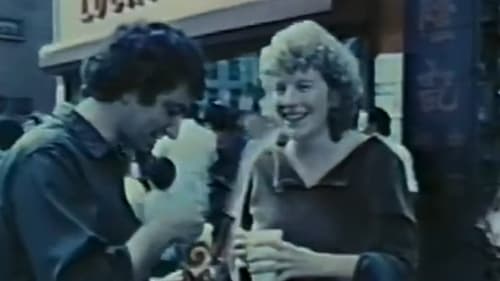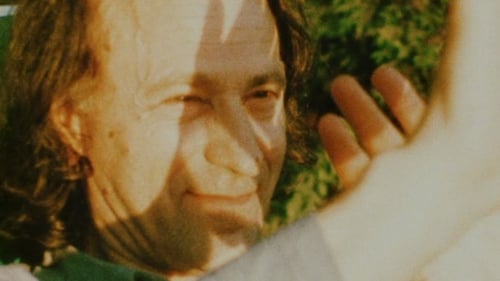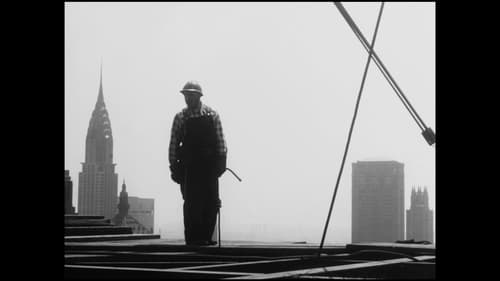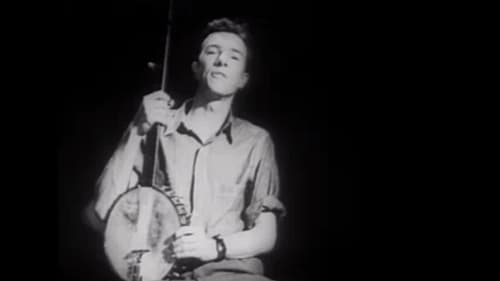Willard Van Dyke
Nascimento : 1906-12-05, Denver, Colorado, USA
Morte : 1986-01-23
História
Willard Van Dyke (December 5, 1906 – January 23, 1986) was an American filmmaker, photographer, arts administrator, teacher, and former director of the film department at the Museum of Modern Art. Van Dyke went to the University of California, dropping out for a time to avoid taking an ROTC course.
Van Dyke died in January 23, 1986 of a heart attack on his way to Cambridge, Mass., where he was named Laureate Artist in Residence at Harvard. He was 79 years old. Van Dyke is survived by his second wife, the former Barbara Millikin, of New York; a daughter, Alison Van Dyke, of Ithaca, N.Y.; three sons, Peter of New York City; Murray of Santa Fe and Neil of Stowe, Vt., and six grandchildren.
Description above from the Wikipedia article Willard Van Dyke, licensed under CC-BY-SA, full list of contributors on Wikipedia.

Self
Filmmaker Jonas Mekas films 160 underground film people over four decades.

Self
A film collage tracing the story of the lives, loves, and deaths within the artistic community surrounding Jonas Mekas.

Director
The blacklisted American documentarian Willard Van Dyke filmed this tale about tobacco workers in the heart of the Puerto Rican countryside. Heeding their wives’ advice, individuals join forces in a cooperative so they can sell their crop of tobacco leaves at fair market value.

Director
Nominated for an Academy Award, this live-action short film playfully chronicles the construction of the Tishman Building at 666 Fifth Avenue in New York City.

Producer
Nominated for an Academy Award, this live-action short film playfully chronicles the construction of the Tishman Building at 666 Fifth Avenue in New York City.

Director
An artistic short on the floral beauty of Puerto Rico set to folk music.

Director of Photography
After Caroline Cram finds herself in an analyst's office, she starts groping for the truth about her hopelessness, fears, loneliness and anxieties. A fact and fiction documentary financed by the U. S. Public Health Service and endorsed by the National Association for Mental Health and the National Institute for Mental Health.

Producer
After Caroline Cram finds herself in an analyst's office, she starts groping for the truth about her hopelessness, fears, loneliness and anxieties. A fact and fiction documentary financed by the U. S. Public Health Service and endorsed by the National Association for Mental Health and the National Institute for Mental Health.

Director
Marriage training film dramatizing a partnership too fraught with conflicts to survive. Produced as part of a post-World War II initiative to make marriages more sustainable in the face of postwar dislocation.

Director
1948 ARC Identifier 46998 / Local Identifier 306.131. FEATURES THE PERSONALITY, PHILOSOPHY, TECHNIQUES AND ARTISTRY OF EDWARD WESTON, AS SHOWN THROUGH SCENES OF THE ARTIST AT HOME, ON LOCATION AND AT WORK WITH HIS STUDENTS. U.S. Information Agency. (1982 - 10/01/1999) Made possible by a donation from Simon Phipps

Director of Photography
1948 ARC Identifier 46998 / Local Identifier 306.131. FEATURES THE PERSONALITY, PHILOSOPHY, TECHNIQUES AND ARTISTRY OF EDWARD WESTON, AS SHOWN THROUGH SCENES OF THE ARTIST AT HOME, ON LOCATION AND AT WORK WITH HIS STUDENTS. U.S. Information Agency. (1982 - 10/01/1999) Made possible by a donation from Simon Phipps

Director
A documentary/recruitment film originally intended for showings outside the United States to promote careers in public health and American methods in public health education. Directed by social documentarian Willard Van Dyke, and delivered entirely in the characteristic voice-over narration of that genre, the film centers around a young doctor, who during the course of his medical residency at the New York Presbyterian Hospital becomes disillusioned with the failures of the medical profession to address larger social and environmental health factors and discovers the field of public health. The young doctor moves to Baltimore to study at the Johns Hopkins School of Hygiene and Public Health and finds his professional calling fighting a diphtheria outbreak in the poverty-stricken streets and row-houses of East Baltimore.

Producer
A short film about Pete Seeger and the birth of banjo music throughout the Southern United States.

Camera Operator
Short subject commissioned by the National Youth Association to show their efforts at providing job training for unemployed poor youth.

Director
A documentary examining the effects of industrial automation on a small American town.

Director
Educating the children of Appalachia.

Director
Polemic documentary extolling the virtues of suburban life and leaving cities as a place of industry.

Director of Photography
This short Depression-era documentary describes the importance of the Mississippi River to the United States and laments the environmental destruction committed in the name of progress, particularly farming and timber practices and their impact on impoverished farmers.

Director of Photography
“Unhappy with the limited structure of league newsreels, Nykino, a splinter filmmaking collective, produced a MARCH OF TIME-type series under the banner THE WORLD TODAY. Only two episodes were released, the first premiering with Strand’s THE WAVE (1936). This one, like NATIVE LAND, addresses fascism in America.” - Bruce Posner” (via Light Cone). Not to be confused with the similarly titled Black Legion from 1937, directed by Archie Mayo.

Director
A commercial for the Works Progress Administration. We see hands close up: working, playing, praying, whittling, and strumming. Hands use saws and hammers, lift stones, turn wheels, then write, type, apply a bandage, play a violin, use a compass, and hold a U.S. Treasury note. Hands put a shoe on a customer, shake a thermometer, and count out bills and coins into other waiting hands. A hand places an engagement ring on a finger, buys a movie ticket, and reels in a fishing line. There are multiple images repeating what we've seen. A chicken is basted; other chickens get grain. It's a national celebration.







